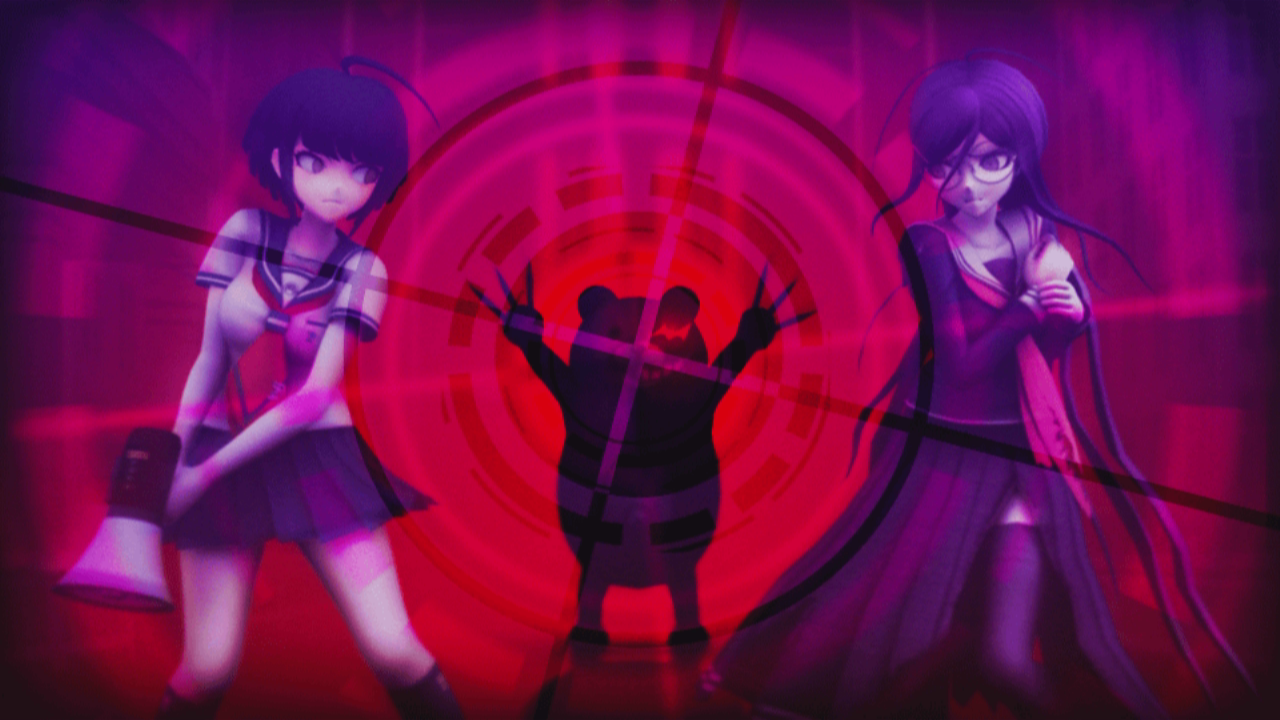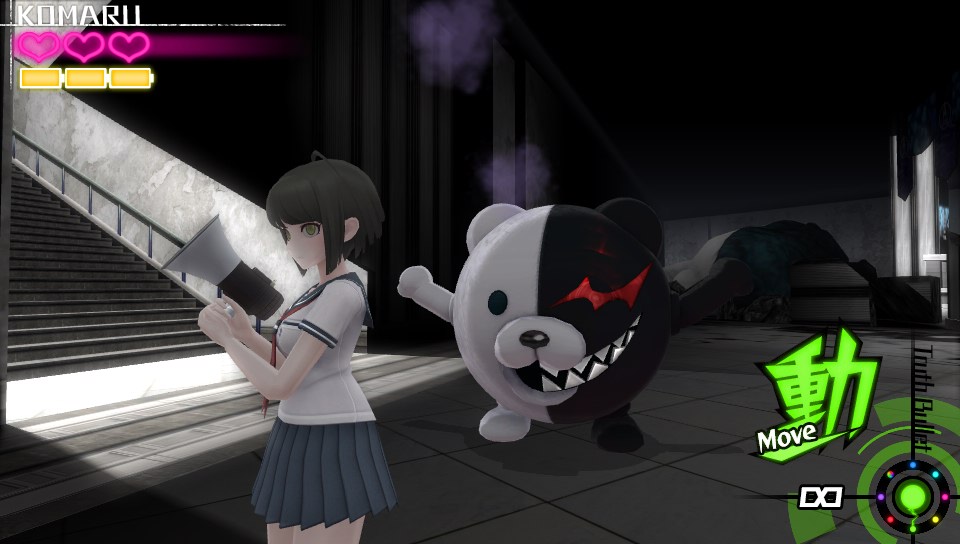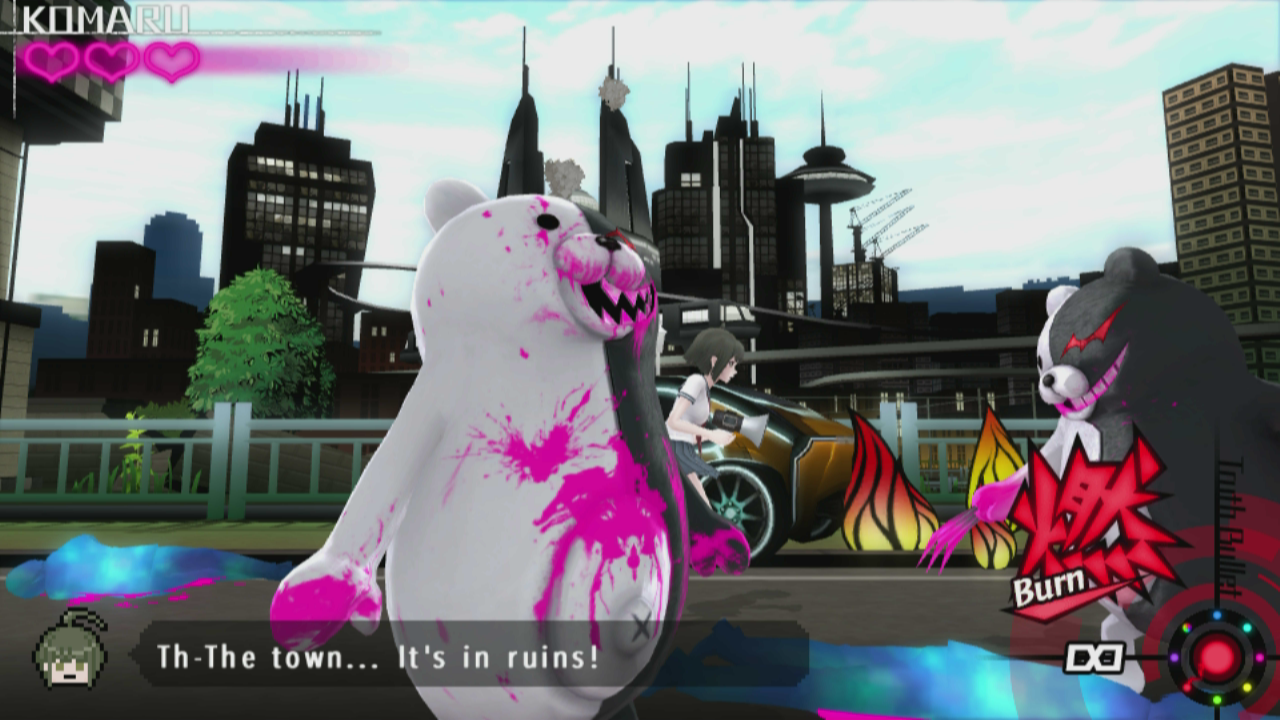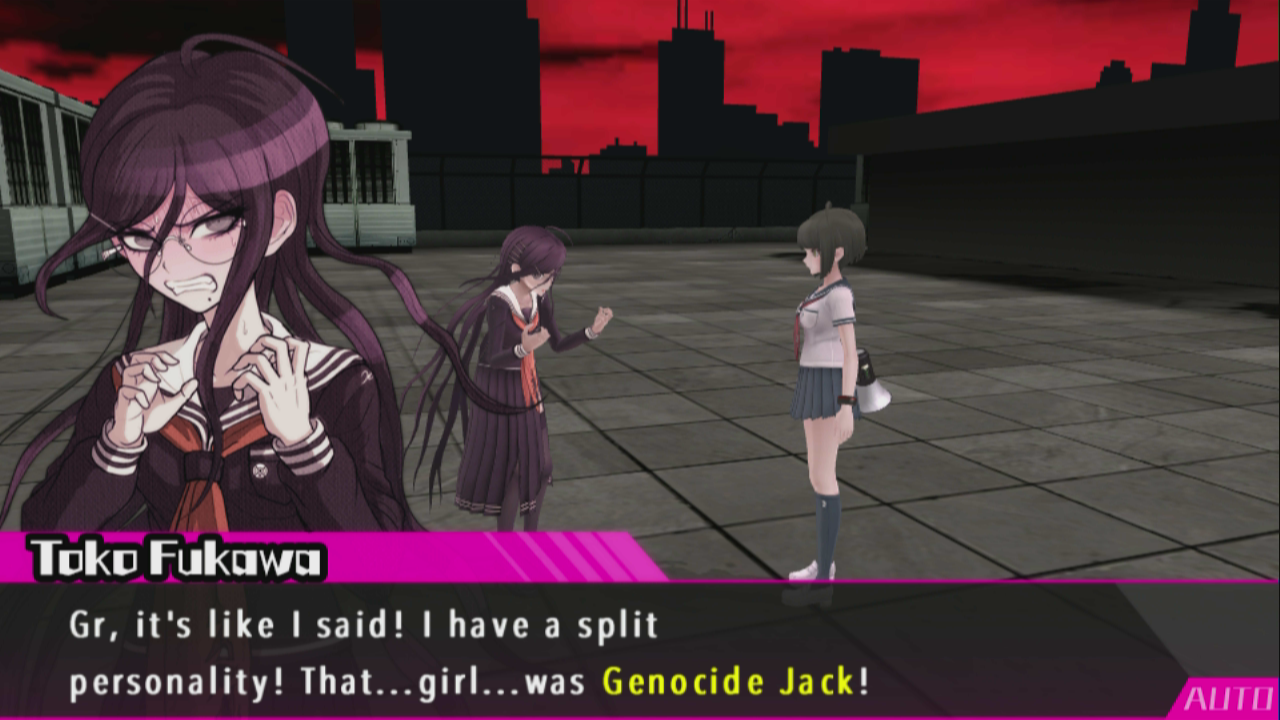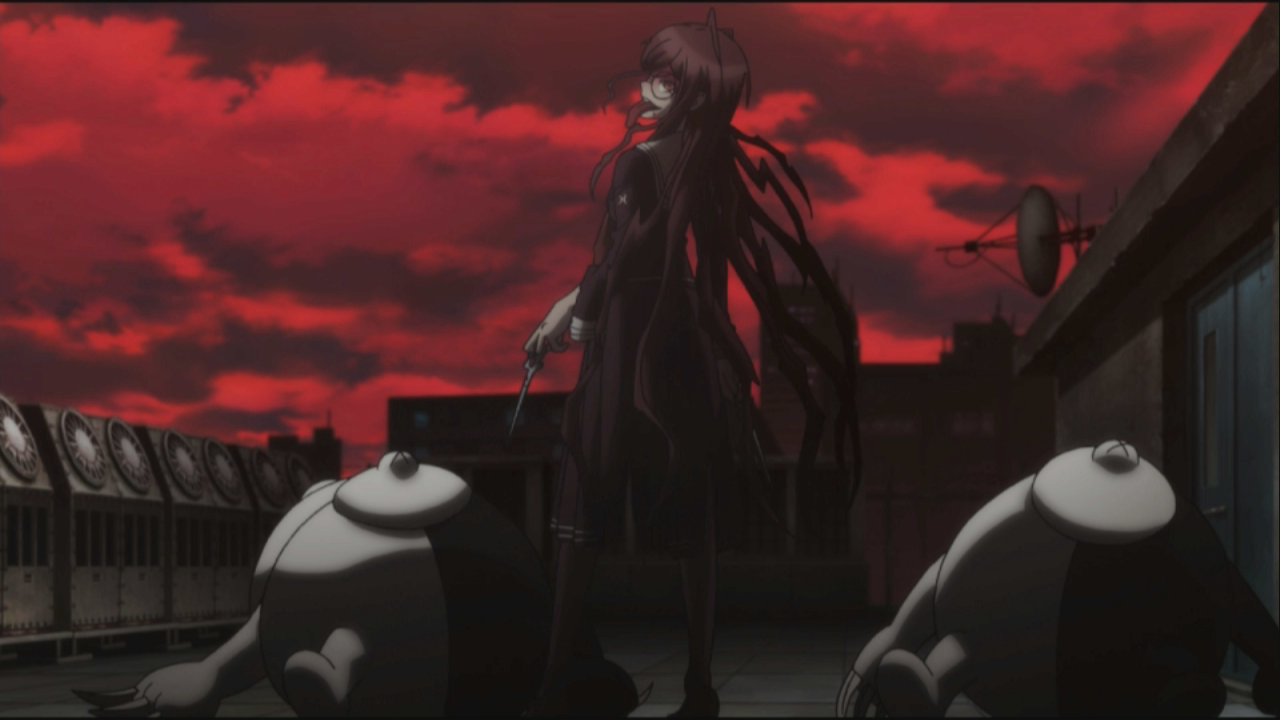Danganronpa fans won’t want to miss Another Episode: Ultra Despair Girls. This is no shooter-ripoff of the visual novel series; instead, it’s a fun exploration of the series’ story in a new style.
Ultra Despair Girls is a third-person shooter, mixed with some 2D story elements. It offers a ton of extras, average action, and a truly intriguing story in the classic, sometimes-sharp, sometimes-creepy, sometimes-sappy Danganronpa style.
It launches September 1 on PlayStation Vita from developer Spike Chunsoft and publisher NIS America for $40.
Check out our Reviews Vault for past game reviews.
What you’ll like
The Danganronpa story arc
Make no mistake: This may be a much more action-oriented approach to the series than previous games, but Ultra Despair Girls still focuses on the story. While no one will buy this title for the kick-butt action (more on that later), I was pleasantly surprised by how much the game added to the Danganronpa canon.
The story takes place between the two previous games (Danganronpa: Trigger Happy Havoc and Danganronpa 2: Goodbye Despair,) but doesn’t share their desperate-high-schoolers-in-locked-room scenarios. In those games, students killed other students, and it was your job to figure out what was going on.
SPOILER ALERT: If you plan to play through the first game in the series, major, unavoidable plot spoilers for that game start here.
Kazutaka Kodaka, who authored the first two games, also wrote Ultra Despair Girls. His heroine is Komaru Naegi, the younger sister of Makoto Naegi, a survivor from the first game. The bad guys have imprisoned Komaru for 18 months to ensure Makoto’s compliance, so she is completely unaware of everything that’s happened before — a nice entry point for people unfamiliar with the games.
She makes her escape during an attack on the city where she is being held. Hordes of evil bear robots — modeled after the striking black-and-white Monokuma bear from the other two games — are sent by eerie evil children who call themselves “Warriors of Hope.” Their mission: to kill off adults (and teenagers who are about to become adults).
Soon, Komaru meets up with the scholarly Toko Fukawa, another survivor from the first game, whose serial-killer alter-ego comes in handy as you proceed through this title.
The story continues the Danganronpa obsession with hope and despair, and helps tie the first two games together in a way that bodes well for Danganronpa 3, now in early development. Other than sometimes ham-handed treatment of the past traumas of the evil children — did we really have to play through a torture scene based on a childhood assault? — it crafts a compelling arc.
What you hear
Ultra Despair Girls is a joy to listen to. The music is strong throughout, often featuring remixed tracks from the other two games, and the voice acting is worth leaving the volume up for.
For a game so dominated by story, voice acting for so many key plot moments added a ton to the overall title. The music varied widely depending on scene — some featured vocals, some pure instrumentals, all varying in style depending on what was happening on screen.
Ultra Despair Girls feels like an immersive story arc in part because the things you hear, both verbal and musical, do such a nice job of advancing the action.
Fukawa’s action sequences
While most of the action in the game is fairly pedestrian, with some mild puzzle elements, Fukawa’s alter ego Genocide Jack offers some terrifically fun cutscene style fatalities. Mash buttons to create combos, and she’ll build up lust. Max out, and you can perform special attacks that use up her accumulated scissors, and they are uniformly hilarious.
